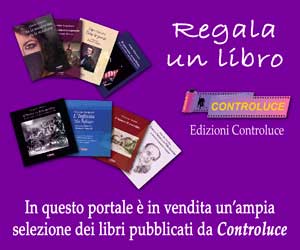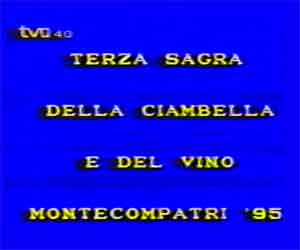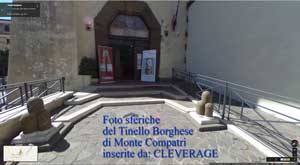ARNALDO POMODORO. IL GRANDE TEATRO DELLE CIVILTÀ
ARNALDO POMODORO.
IL GRANDE TEATRO DELLE CIVILTÀ
curated by Lorenzo Respi and Andrea Viliani
in collaboration with Fondazione Arnaldo Pomodoro
12 May – 1 October 2023
Palazzo della Civiltà Italiana
Quadrato della Concordia, 3 – Rome EUR

Arnaldo Pomodoro. Il Grande Teatro delle Civiltà, 12 May – 1 October 2023.
Installation views at Palazzo della Civiltà Italiana, Rome. Ph. Agostino Osio
On 12 May 2023 FENDI inaugurates the exhibition Arnaldo Pomodoro. Il Grande Teatro delle Civiltà [Arnaldo Pomodoro. The Great Theatre of Civilizations] in its own headquarters, the Palazzo della Civiltà Italiana in Rome. The exhibition, curated by Lorenzo Respi and Andrea Viliani in collaboration with Fondazione Arnaldo Pomodoro, will be free to visit until 1 October 2023.
The collaboration between Fondazione Arnaldo Pomodoro and FENDI is part of a broader partnership aimed at combining respect for historical heritage with the support and diffusion of contemporary artistic languages and the search for new forms of collaboration based on sustainability and innovation.
Conceived for both the indoor and outdoor spaces of the Palazzo della Civiltà Italiana in the EUR area – that since 2015 has housed FENDI’s Roman headquarters – the exhibition spans over seventy years of the artist’s experimentation, taking the form of an autobiographical “theatre”, at once real and mental, historical and imaginative, in which are staged approximately thirty works created by Pomodoro between the late 1950s and 2021, together with a series of archival materials – photographs, documents, sketches, drawings, many of them never exhibited before – that evoke the spirit and ambiance of the artist’s studio and archive.
Il Grande Teatro delle Civiltà explores the interconnection, in Pomodoro’s practice, of visual and scenic arts and highlights the relationship between the planning component of the work and its creation. A storyline from which emerge the possible and multiple allusions to those archaic, antique, modern, or even just fantastical “civilisations” to which Pomodoro’s work constantly refers, originating shapes and materials that are at once memory of the past and vision of the future and that reframe our knowledge and our imaginaries, our experience of time and space, of history and myth.
The exhibition begins at the four external corners of the building where the four sculptures Forme del mito (1983) – Il potere (Agamennone), L’ambizione (Clitennestra), La macchina (Egisto), and La profezia (Cassandra) – are placed. The sculptures are taken from the scenic machines that were created for the series of theatrical performances inspired by Aeschylus’ Orestes by the artist Emilio Isgrò, presented on the ruins of Gibellina’s main square which was later destroyed by the Belice earthquake. Inserting themselves like a backdrop between the Palazzo, the natural landscape and the surrounding urban community, the four Forme del mito re-draw and give new meaning to the building, transforming the so-called Colosseo Quadrato – one of the architectural symbols of Modernism and Italian Rationalism – into an open, reinterpretable and re-designable work, therefore not defined once and forever.
In the Palazzo delle Civiltà Italiana’s entrance hall appear two costume-works created by the artist for two theatrical shows: Costume di Didone (for Dido, Queen of Carthage by Christopher Marlowe, staged in Gibellina in 1986), and Costume di Creonte (for Oedipus Rex by Igor Stravinsky performed in Siena in 1988). Produced with sculptural materials paired with ephemeral materials such as raffia and fabric, these costumes recall the iconography and dramaturgy of ancient Greece as well as the antique iconographies and traditional techniques of African and Asian works of art, reactivating the tale of the legendary stories of Dido and Oedipus.
The exhibition continues in two specular rooms and a connecting room, designed like two acts of a play with an intermezzo. In the main spaces we find two oppositely coloured works staged symmetrically: Le battaglie (1995), in black, and Movimento in piena aria e nel profondo (1996-1997), in white.
The first with its angular, sharp and pointy shapes and through the various materials used (tangles of rope, wedges and bolts) evokes The Battle of San Romano by Paolo Uccello, a Renaissance masterpiece. Alongside this are staged two more works that delve deeper into the examination of Pomodoro’s research: the Grande tavola della memoria (1959-1965), a reflection on bas-relief and on the ancient technique of casting using cuttlefish bone, and Il cubo (1961-1962), a piece that coincides with the start of a new experimentation of the elementary forms of Euclidean geometry.
In the second room the work Movimento in piena aria e nel profondo, composed of a double curve referring to the large celestial and terrestrial spaces, depicts the sculptural action as “digging into the complexity of things” that solidifies into the awareness of being able to “bend time and space”.
Next to it is a work that gives conceptual circularity to the exhibition, flipping its end over and starting again from its incipit: Continuum (2010), a huge relief entirely filled with the characteristic marks of the artist’s early works, a sort of “outline” that contains the codes and the inventory of all his “writing”.
In these two rooms, like an exhibition within the exhibition, are also presented the design and documentary materials, most of which have never been shown before – artist’s books, sketches, drawings, models, letters, photographs, catalogues, study materials of the most significant projects – set up within display drawers and racks that visitors can open and consult, so as to recall the atmosphere of the artist’s studio and the spirit of his archive.
Connecting the two rooms, like an intermezzo between two theatrical acts, is the Rotativa di Babilonia (1991), placed outside but visible from the Palazzo’s windows, with its circular shape suggesting the idea of cyclical and continuous movement, which takes place both in time and in space. Inside the hallway is exhibited the Tracce (1998) series, composed of twenty-one white, black and rust-coloured calcographic reliefs.
The itinerary concludes on the third-floor arcade with Osso di seppia (2011-2021), symbolic matrix of all the artist’s works, who actually began his sculptural experimentation by carving into cuttlefish bone. That same shape is also present as an emblematic element in the Ingresso nel Labirinto environment, located in the former exhibition space of the artist’s foundation in Milan, where FENDI has had its headquarters since 2013.
Il Grande Teatro delle Civiltà is also a starting point for discovering Pomodoro’s other works located in Rome and around the world, an opportunity to deepen one’s knowledge of the artist’s experimentation and his relationship with the “eternal city”. The exhibition is accompanied by a monographic catalogue published by Skira – with an essay by the two curators, numerous critical and bio-bibliographic materials and extensive photographic documentation – which will be available in FENDI boutiques and directly in the exhibition space. It can be explored digitally via a dedicated mini website (http://arnaldopomodoro.fendi.com/) where users will also be able to sign up to visit the exhibition.
FOR IMAGES PLEASE WRITE TO:
claudia@larafacco.com; camilla@larafacco.com
Arnaldo Pomodoro. Il Grande Teatro delle Civiltà
Curated by Lorenzo Respi and Andrea Viliani in collaboration with Fondazione Arnaldo Pomodoro
Palazzo della Civiltà Italiana – Quadrato della Concordia 3, Rome EUR
From 12 May to 1 October 2023
Monday to Sunday, from 10:00am to 8:00pm
Closed on 15 August 2023
Free Entry
PRESS CONTACTS:
FENDI
Maria Sole Henny Worldwide mariasole.henny@fendi.com
Flavia Cirrincione Worldwide flavia.cirrincione@fendi.com
Fondazione Arnaldo Pomodoro
Via Vigevano 9 – 20144 Milan
tel. (+39) 02 89 075 394
info@fondazionearnaldopomodoro.it
fondazionearnaldopomodoro.it
Lara Facco P&C
Lara Facco | M. +39 349 2529989 | E. lara@larafacco.com
Claudia Santrolli | M. +39 339 7041657 | E. claudia@larafacco.com
Camilla Capponi | M. +39 366 3947098| E. camilla@larafacco.com





-ban.jpg)















































































































































































Non ci sono commenti, vuoi farlo tu?
Scrivi un commento